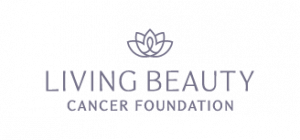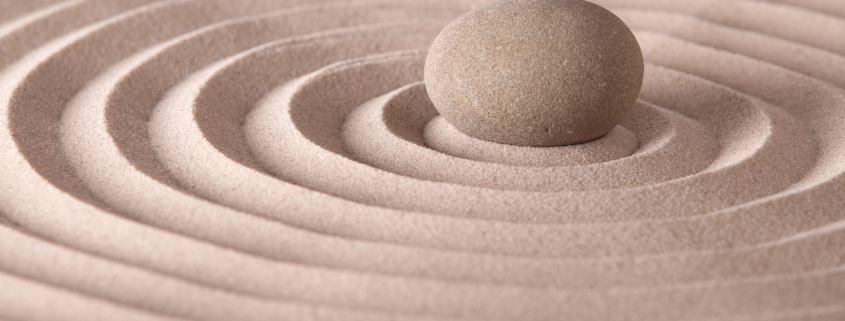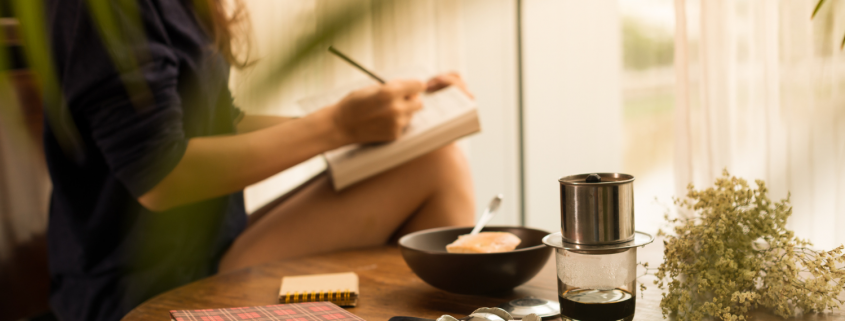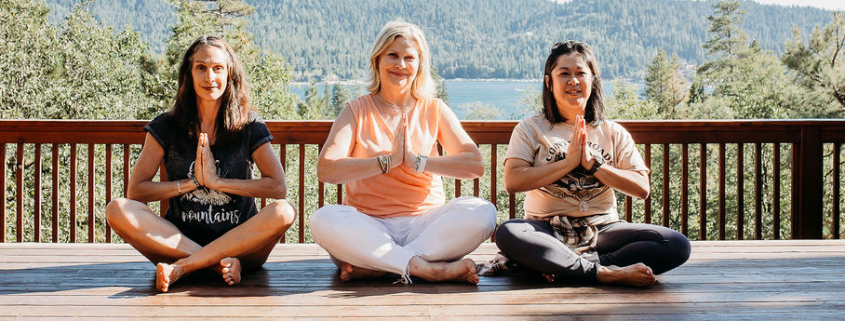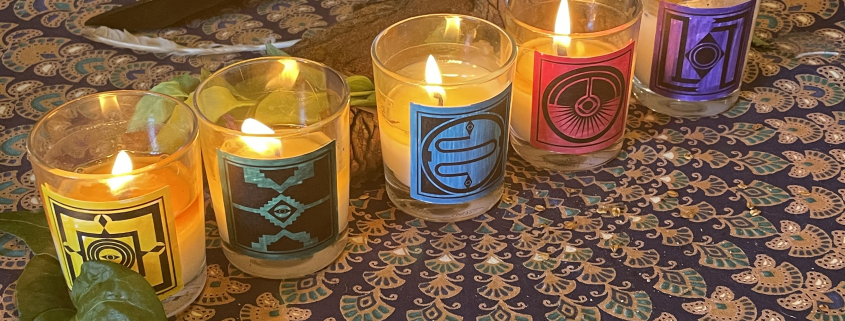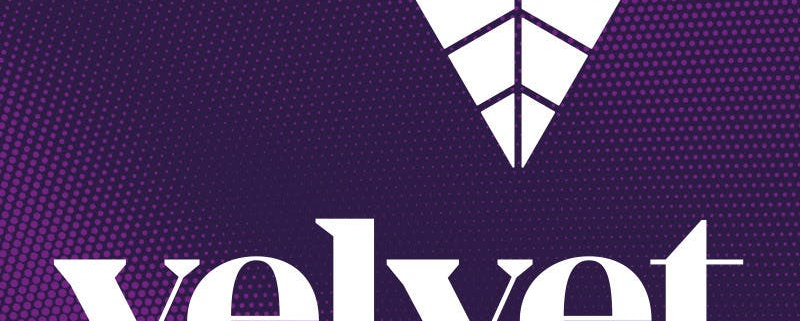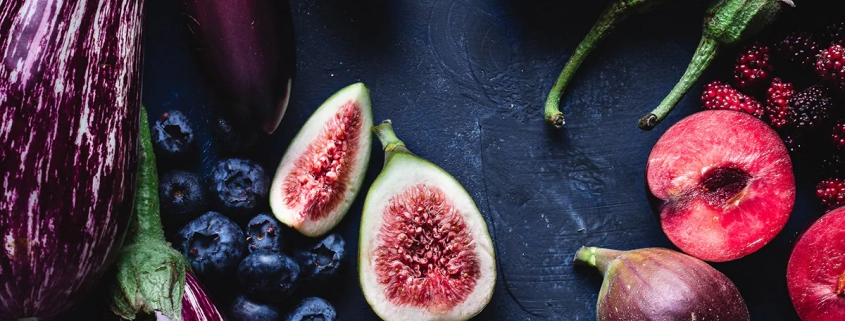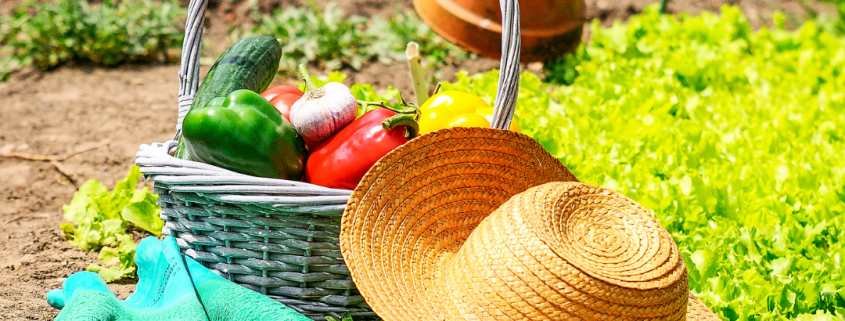Monthly Sadhana – May
/0 Comments/in Holistic Wellness, Living Beauties /by Guest ContributorBy Jessica Baker RN, BSN, E-RYT 500, YTRX
Simply, yogic tradition defines Sadhana as a daily spiritual practice. Here, we will define it further as a practice to which we engage to enhance our well-being. This practice encourages us to devote time in the day directly to ourselves. There is no secret amount of time that is better than any other. You may choose to practice a 3-minute Sadhana one day and a 1-hour Sadhana the next. What is important, is that you are consistent in giving time to yourself each day. That is the real beauty here… it’s all in what you choose!
The practice focus will change with each month, providing nourishment for the mind, body, and soul.
In celebration of May, this month’s practice will be: BLOOM.
Each of the following categories offers practices for BLOOM. You can choose to practice one at a time or choose a favorite combination. There is no right or wrong. This is YOUR practice!
Movement: Butterfly Pose – Stimulate and Stretch
- From a seated position, bring the soles of your feet together, close to your pelvis, allowing your knees to fall out to the sides. (The legs appear to resemble butterfly wings)
- Ground your sitting bones and lengthen your spine.
- Hold onto the outsides of your feet and press the soles of your feet towards each other. You may also place your hands under your feet for added support.
- If your body allows it, fold forward from the hips, keeping your spine long. Or choose to stay in a neutral seated pose.
- Stay here for 5-10 breaths.
- Release your fold, lengthen your spine to come back to a seated position.
- Gently bounce your legs up and down (like a butterfly fluttering their wings).
- Stay here for 5-10 breaths.
- Repeat 3-5 times.
Meditation: I am willing to let go of anything that is unhelpful, and I am ready to discover what makes me bloom.
Sit in a comfortable chair with your back supported and both feet flat on the ground. Hands resting in your lap. Breathing gently, close your eyes.
As an alternative position: Lay flat on your back on a comfortable surface with your knees bent and your feet planted. Maintain the natural curvature of your spine as you connect with the surface below you. Rest your hands on your abdomen. Breathing gently, close your eyes.
Continue breathing gently. Silently repeating “I am willing to let go of anything that is unhelpful, and I am ready to discover what makes me bloom.”
Breath: Pursed Lip Breath – A slow breathing technique to improve oxygenation in the lungs by removing stale air
- Come to a comfortable seated position. Place a folded blanket under your seat to allow for greater ease as you elongate the spine.
- Release your tongue from the roof of your mouth.
- Take a deep breath in through the nose for a count of 3 seconds, keeping your mouth closed.
- Purse your lips. Exhale slowly through the mouth for a count of 5 seconds keeping your lips pursed.
- Make the exhalation slow and draw out the breath gradually.
- Repeat this breath 3-5 times.
Journal: Bloom – A state of beauty, freshness, and vigor
What image comes to mind when you read the word “bloom”? Describe this image paying attention to color, movement and texture.
What are you holding onto that you need to let go of at this moment? How would it feel to let it go?
List 5 things that inspire you today.
How have you chosen yourself recently? How will you choose yourself today?
Please feel free to comment on a practice focus you would like to explore in the coming months.
And remember, this practice is not about perfection. You are enough.
If you liked this post check out last month’s Sadhana!
If you would like to support The Foundation for Living Beauty and help provide vital wellness and support services free of charge to women with cancer you can become a monthly donor!
Learn more about Living Beauty’s programs and services here!
Think Twice! Our Gut Is Our Second Brain
/0 Comments/in Frontpage Article, Holistic Wellness, Nutrition /by Guest ContributorBy Jessica Baker RN, BSN, E-RYT 500, YTRX
Have you ever gone with your “gut instinct?” Did you know this decision was based out of your second brain? Hidden throughout the digestive system this second brain is expanding medicine’s understanding of the link between digestion, health, emotions and even the way we think!
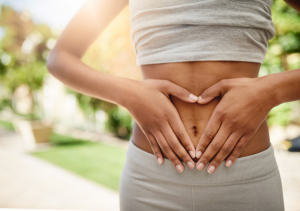
What is the digestive system?
Our digestive system is made up of the digestive tract, also referred to as the gut, and 3 accessory solid organs. The digestive tract is a series of hollow organs joined in a long, twisting tube from the mouth to the anus. These hollow organs include the mouth, esophagus, stomach, small intestine, large intestine and the anus. The solid accessory organs are the liver, pancreas, and gallbladder. Simply, this series of hollow and solid organs allows the body to get the nutrients and energy it needs from the foods we eat.
East Vs West
For thousands of years eastern medicine, traditional Chinese medicine and Ayurvedic medicine, have taught that the gut is the foundation of health. Their teachings prove how our gut can directly affect both our mind and body. Within the last several years, western medicine concepts have begun to explore this relationship more in-depth; citing the understanding of the links between digestion, mood, health and the way we think.
Trust Your Gut – Enteric Nervous System
We often hear people say “trust your gut” when faced with decisions in which we express doubt. Trusting your gut is a reliable way for when you feel as if you are at the crossroads of a decision. And without a doubt, science can prove this! The enteric nervous system (ENS), this brain in our gut, is an enormous number of neurons found within the gastrointestinal tract. These neurons are responsible for controlling the many functions of our GI tract. It is said, the ENS has more neurons than in the entire spinal cord! What’s amazing about the ENS system is that it works independently of our central nervous system, the system found in our brain and spinal cord. This network of neurons uses the same chemicals and cells of the brain to help us digest and alert us to when something is amiss. The ENS can gather information about the conditions inside your GI tract, process the information and generate a response without sending it back to your brain. This is the magic and science of our gut instinct!
The Vagus Nerve and Our Gut Microbiome
Vagus is the Latin word for wandering. The longest of the cranial nerves, the vagus nerve runs from your brain to your large intestine. Unlike some of our cranial nerves, this nerve has both sensory and motor functions. The superpowers of the vagus nerve serve as a bridge linking our gut microbiome to our brain. Our gut microbiome is made of trillions of microscopic organisms including bacteria, fungi, viruses and parasites. These microbiotas are found in the stomach and small intestine, with the greatest number found in the large intestine. You really can’t get through a day without seeing an article or social media post about our gut microbiome. And honestly, the gut microbiome should be a leading headline! Our gut microbiome is not a one size fits all; It is unique to each and every one of us! When our microbiome is healthy and thriving, we thrive too. But if our microbiome is polluted with pests, it has the ability to upset our whole-body system. While Western medicine has always known the importance of the microbiome, they are learning more about how it directly affects our health and well-being.
Support Your Gut Health
Supporting our digestive health is just not about eating the right foods but also paying attention to our daily habits and routines. As you have learned by now, it’s all connected!
Here are 10 ways to support a healthy gut.
Fiber — Most women do not get enough fiber in a day. It is recommended to consume at least 25g of fiber through whole foods. Good sources of fiber are found in avocados, legumes, whole grains, crunchy green vegetables, bananas/berries/apples and nuts/seeds.
Fermented Foods — Fermented foods are beneficial as they have been known to be antioxidant, anti-microbial and anti-inflammatory. These foods include yogurt, sauerkraut, miso, apple cider vinegar and sourdough bread.
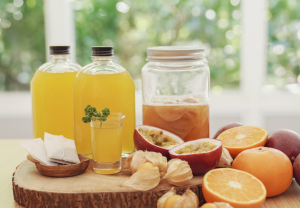
Omega 3 Fatty Acids — These fatty acids curb inflammation in the blood vessels and the rest of the body. Omega 3 fatty acids can be found in: fatty fish (salmon/tuna), flax/chia seeds, walnuts and eggs.
Prebiotics & Probiotics — Prebiotic (fibers) help feed and strengthen probiotic bacteria. Probiotics help replenish the good bacteria that naturally occur in a healthy intestine. All prebiotics are dietary fiber! Probiotics can be found in all fermented foods! (Examples listed above in the complimentary category) Pre/Probiotics are also the most popular supplement and are readily available just about everywhere.
Limit Added Sugars — Excessive sugar consumption increases the growth rate of bad bacteria disrupting the microbiome balance. Limit foods with added sugar (not including natural sugars as found in fruits/vegetables) to about 24g a day.
Stay Hydrated — Staying properly hydrated is important for supporting digestion and maintaining proper bowel function. Before taking that first sip of caffeine in the AM, drink a glass of water to start your rehydration cycle. Set a goal to drink at least 8 -10 glasses of water throughout the day.
Sleep — Does poor sleep cause an imbalanced gut microbiome or does an imbalanced gut microbiome disrupt sleep? We are still trying to figure this out. Keep consistent sleep patterns. Engage in calming activities before bed to signal to your body that is time to start winding down. Aim for 7-9 hours of sleep every night.
Breathing — Abdominal breathing, also called diaphragmatic breathing, is a type of breathing for which our stomach expands on the inhale and contracts on the exhale. Activating the diaphragm creates a gentle massage action for our GI organs. (Lie flat or in a reclined resting position. Place 1 hand on your abdomen. Inhale slowly and deeply through your nose into your abdomen allowing it to rise. Exhale through your mouth, allowing your abdomen to contract. Repeat this breath series 5-7 times.)
Exercise/Movement — Movement improves circulation. When our gut has “good flow” it becomes stronger and better able to maintain the right balance of healthy bacteria. We have slowly become a society of immobility largely due to the advancements of technology. So, let’s get moving! Walking, biking, and yoga are just a few of the exercises shown to improve overall gut health. Make movement a priority in your everyday!
Meditation & Stress Reduction — Meditation has been found to reduce levels of epinephrine, norepinephrine, and cortisol, all biological markers of stress. Take a 5-minute break! Find a quiet space to sit or lie down. Close your eyes and repeat silently “May this be of benefit to me.” While gently inhaling and exhaling repeat this affirmation repeatedly. Visualize receiving positive energy from the earth and your surroundings.
In Summary
Our daily lifestyle habits and the foods we choose to put into our bodies become vital to our physical and emotional well-being. Science has shown us that not only does our GI tract have the ability to gather information but to also process it. So, the next time your gut is talking to you…take some time to listen. It’s much smarter than you may have once thought!
References:
(12/2017) NIH (NIDDK) Your digestive system and how it works.
(09/2023) Cleveland Clinic. Body Systems & Organs. The Gut-Brain Connection.
(08/2023) Cleveland Clinic. Body Systems & Organs. Gut Microbiome.
If you liked this post check out this one about redefining anxiety!
If you would like to support the Living Beauty Cancer Foundation and help provide vital wellness and support services free of charge to women with cancer you can become a monthly donor!
Learn more about Living Beauty’s programs and services here!
Monthly Sadhana – April
/0 Comments/in Community, Holistic Wellness /by Guest ContributorBy Jessica Baker RN, BSN, E-RYT 500, YTRX
Simply, yogic tradition defines Sadhana as a daily spiritual practice. Here, we will define it further as a practice to which we engage to enhance our well-being. This practice encourages us to devote time in the day directly to ourselves. There is no secret amount of time that is better than any other. You may choose to practice a 3-minute Sadhana one day and a 1-hour Sadhana the next. What is important, is that you are consistent in giving time to yourself each day. That is the real beauty here… it’s all in what you choose!
The practice focus will change with each month, providing nourishment for the mind, body and soul.
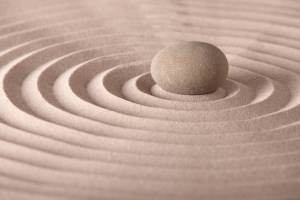
In celebration of Spring, this month’s practice will be Renewal.
Each of the following categories offer practices for Renewal. You can choose to practice one at a time or choose a favorite combination. There is no right or wrong. This is YOUR practice!
Movement: Standing forward fold – Invite flow into your life
- Stand with legs hip distance apart, feet supported by the ground beneath you, arms comfortably at your side, head and neck in line with the spine, eyes gazing forward.
- Bring your hands to your hips. Inhale.
- On the Exhale. Move from the hips to fold your torso over your legs. Keep the spine extending as you move toward the ground.
- Once in your forward fold, take your gaze to your feet, release your hands toward the ground. Breathe gently, inhaling and exhaling.
- When ready, bring your hands back to your hips. Keeping the spine straight, gently rise back to standing.
- Repeat 3-5 times.
Meditation: When I let go of what I am, I become what I might be
- Sit in a comfortable chair with your back supported and both feet flat on the ground. Hands resting in your lap. Breathing gently, close your eyes.
- As an alternative position: Lay flat on your back on a comfortable surface with your knees bent and your feet planted. Maintain the natural curvature of your spine as you connect with the surface below you. Rest your hands on your abdomen. Breathing gently, close your eyes.
- Continue breathing gently. Silently repeating “When I let go of what I am, I become what I might be”
Breath: Lotus Breath – A gentle breath to energize the body and clear stagnation
- Come to a comfortable seated position. Place a folded blanket under your seat to allow for greater ease as you elongate the spine.
- Bring your hands together at heart center, then shift your hands into Lotus Mudra: Keep the heels of your palms touching, your pinky fingers touching and your thumbs touching as you peel the palms of your hands, index, middle and ring fingers away from one another. The three middle fingers of each hand blossom away from one another like a lotus flower in bloom.
- As you inhale through your nose, open your fingers wider. Exhale with a clearing sigh through your lips to bring your fingers back together as if sealing the flower back into a bud.
- Repeat this breath and hand movement 3-5 times.
Journal: Spring – A season of renewal and growth
- Tap into your senses. Describe the sights, sounds and smells of early spring.
- How does your body feel with the change of the season? What does it need more or less of?
- List 10 small things that bring you joy in spring.
- Reflect on a recent experience that sparked creativity in you.
Please feel free to comment on a practice focus you would like to explore in the coming months.
And remember, this practice is not about perfection. You are enough.
If you liked this post check out this one about redefining anxiety!
If you would like to support The Foundation for Living Beauty and help provide vital wellness and support services free of charge to women with cancer you can become a monthly donor!
Learn more about Living Beauty’s programs and services here!
Anxiety: Redefine Your Relationship With It
/0 Comments/in Holistic Wellness /by Guest ContributorAnxiety: Redefine Your Relationship With It
By Jessica Baker RN, BSN, E-RYT 500, YTRX
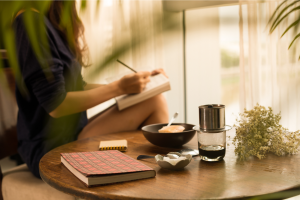
So, What Really is Anxiety?
The American Psychological Association (APA) defines anxiety as “an emotion characterized by feelings of tension, worried thoughts, and physical changes like increased blood pressure.” Emotionally, anxiety can cause the thinking mind to feel like a hamster in a hamster wheel; round and round it goes. Physically, anxiety can make us feel nauseous, restless, tired, and even dizzy. Anxiety is an emotion that we all have experienced. So, know that you are not alone when this emotion creeps in. Anxiety is now the leading mental health problem around the world, and the incidence of anxiety is still rising.
But Did You Know Anxiety is an Activating Emotion?
Activating emotions are emotions that elicit a heightened state of arousal and energy. These emotions can also include excitement and anger. Heightened emotions can offer us new ways of thinking, boost creativity, and motivate us to perform. When we feel activated, we also tend to practice more cautious thinking which can make us great problem solvers! Think of that time you were invited by a friend to meet at a new coffee shop across town. You haven’t seen each other in quite a while, and you have so much to catch up on! But then almost at once, anxiety steps in and your thinking brain says: “What time will I need to leave to arrive on time, does this space offer outdoor seating, will I have to fight to find street parking?” Instead of retreating and choosing to cancel your plans, you quickly find yourself on google, search a few articles, and discover all the answers you need!
Can We Learn to Accept this Emotion?
Do not judge yourself for feeling anxious. It is only normal to want to rid ourselves of this uncomfortable feeling. However, this approach could actually increase our anxiety. Acknowledge the feeling either silently or aloud. “I see you, but I am not going to allow you to define this moment.” Having a gentle awareness will not magically make anxiety disappear, but it will lessen the intensity. It is OK to allow these feelings to co-exist within us. It is often said that those who have dealt with anxiety tend to be more empathetic and understanding to the issues others face. If we can be understanding of others, we must then be gentle with our own understanding of ourselves.
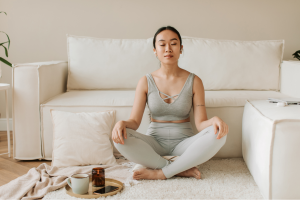
What Can We Do to Lessen Anxiety in the Moment?
Ok, you’ve now acknowledged the emotion and told it take a seat. So now what?
Here are six ways to give yourself space from your feelings of anxiety:
333 Rule — Look around you! Identify 3 objects, 3 sounds, and then move 3 body parts. For example, I see eyeglasses, a book, and a lamp. I hear a car, a dog bark, and a door shut. I lift my arms up reaching toward the ceiling, I gently tilt my head to the right and then to the left, I flex my right foot and then I flex my left foot.
Drink a Glass of Water — Water has natural calming properties and hydration plays a crucial role in our mood. Without water, our brain cannot get enough of the amino acid needed to create serotonin…our feel-good chemical! Grab a glass of water and sit in a comfortable chair. Focus on the refreshing pleasure of each sip!
Take a Walk Outside — Walking reduces cortisol (our stress hormone) from our system. Even a short walk around the block is beneficial. Walking in nature, even urban nature, allows us a sense of connection to our environment. Thus, we become nurtured by nature. Put on some comfortable walking shoes and explore your neighborhood!
Extend Your Exhale — Inhale for 4, Exhale for 6. Sit with your back supported. Focus on a specific image or close your eyes. Inhale through your nose allowing your chest to expand while silently counting 1,2,3,4. Now pause for 1. Exhale through your nose or mouth while silently counting 1,2,3,4,5,6. Repeat this inhale/exhale cycle 3 times.
Connect with Family and Friends – Call/Text/See a family member or a friend. You can choose to share how you are feeling in that moment or you can simply just catch up. There is no right or wrong here! The simple act of engaging with others can trigger a dopamine release, providing you a feeling of satisfaction.
Recite a Mantra or Personal Statement – Choose a statement meaningful to you and speak it aloud in the moment. For Example: “This too shall pass.” “I choose to not acknowledge my thoughts as facts.”
Do you have specific practices you use to lessen your anxiety? If so, please share them in the comments below so others can benefit!
Let’s Summarize.
Our reaction and understanding to how we are feeling is the most important concept in learning to mingle with this emotion. The better you can understand when and how anxiety strikes, the easier it is to take steps to reduce its impact. So next time you recognize feelings of anxiety, choose to redefine your relationship with it.
Experiencing anxiety does not always indicate the presence of an anxiety disorder. However, sometimes we don’t want to navigate all of this alone. If you find your anxiety is interfering in completing activities of daily living, please speak with a trusted health professional.
References:
(2024) Psychology Today. What is Anxiety. Sussex Publishers
(2018) APA Dictionary of Psychology. Anxiety.
If you would like to support The Foundation for Living Beauty and help provide vital wellness and support services free if charge to women with cancer you can become a monthly donor!
Learn more about Living Beauty here!
Living Beauty Celebrates International Day of Yoga!
/0 Comments/in Community, Frontpage Article, Holistic Wellness, Living Beauties /by Mariella D'AvirroJune 21st is International Day of Yoga and it also happens to be the Summer Solstice! The Summer Solstice happens every year when one of the Earth’s poles has its maximum tilt towards the sun and it marks the start of summer. It is the longest day of the year and in many cultures throughout history, it is seen as a day of celebration often marked with festivals and rituals. It is known to represent the transition from action to nourishment and the journey from darkness to light. Because of the extra sunlight, the solstice is associated with nourishment, fertility, and sensuality. This time of year, we are more connected with nature and each other! It is a great time to come together with others, enjoy the local fresh foods that are in season and connect with your body.
Considering the International Day of Yoga falls on the Summer Solstice, a yoga practice is the perfect way to celebrate the change in season and get more in tune with your body! The International Day of Yoga was officially recognized by The United Nations in 2014 and was created to raise awareness of the many benefits of practicing yoga. Yoga can increase strength, flexibility and balance which helps reduce pain and inflammation in the body. It reduces stress, improves sleep and increases your energy overall improving your mental resilience. When the proposal to create a day celebrating Yoga was introduced to the United Nations by the Prime Minister of India, Narendra Modi, he stated, “Yoga is an invaluable gift from our ancient tradition. Yoga embodies unity of mind and body, thought and action … a holistic approach [that] is valuable to our health and our well-being. Yoga is not just about exercise; it is a way to discover the sense of oneness with yourself, the world and the nature.”
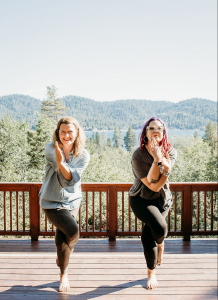
The Foundation for Living Beauty brings yoga to the women we serve all year round because of its amazing physical and mental health benefits. This year we are celebrating International Yoga Day together with a day retreat! Led by the wonderful Yoga Therapist and Living Beauty Sharon Holly, our International Day of Yoga Day Retreat is bringing together Living Beauties in Santa Monica to spend the day practicing yoga, mindfulness and meditation to help them on their cancer journey. Sharon Holly is certified in yoga4cancer, a yoga practice specifically designed to address the physical and mental side effects of cancer and its treatment on our bodies. This day of yoga will allow Living Beauties to practice self-care, learn tools to heal their bodies and minds, and connect with one another.
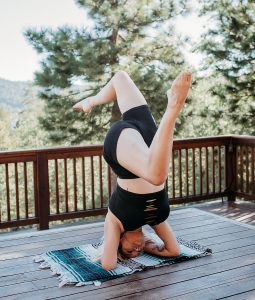
We are so grateful to be able to spend the International Day of Yoga and the Summer Solstice with our Living Beauties! Don’t forget to spend time this summer nourishing your body, enjoying nature and connecting with others!
If you are a woman with cancer and would like to participate in programs like our International Day of Yoga Day Retreat click here to become a Living Beauty!
Read more about yoga4cancer on our here!
Living Beauty Debuts a Brand-New Overnight Retreat!
/0 Comments/in Community, Frontpage Article, Holistic Wellness, Living Beauties, News /by Mariella D'AvirroLast week, twenty-two Living Beauties gathered at the beautiful UCLA Lake Arrowhead retreat center for our first-ever Elemental Overnight Retreat led by the amazing Kristin Dwan! The retreat was specially designed by Kristin and Indyra, Living Beauty’s program director, to take Living Beauties on a journey through the five elements exploring their healing powers. What is even more special about this collaboration is that Kristin is a Living Beauty herself and while attending a retreat at Lake Arrowhead in 2022, her and Indyra were inspired to create the Elemental Retreat. Six months later the seed of an idea that they planted at that retreat came to fruition and the rest is history!
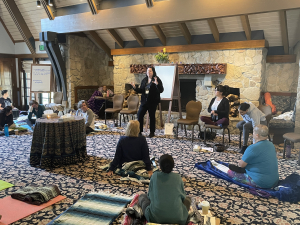
Kristin leading Living Beauties in a workshop about our inner child and how our conscious mind is formed as a child.
The retreat was created around the 5 elements: Earth, Air, Fire, Water and Spirit. Each element has specific qualities that can be harnessed to help anyone on their journey through life and more specifically for our Living Beauties their healing journey after cancer. At the retreat, we used Earth to ground our intentions, Water to cleanse and feel them, Air to dream and clear your mind, Fire to activate and Spirit to connect and level up your healing intentions.
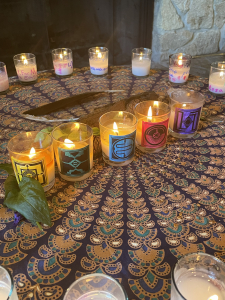
Each of these candles represents an element. Kristin used them to call in the elements during our practice. The candles surrounding the elements represent a Living Beauty and her intention for the retreat.
Everyone Living Beauty created a seed (or intention) for the retreat that they spent the 3 days focusing on bringing into existence. Kristin helped guide them through this process by leading Living Beauties in hypnotic journeys, breath work, reiki, healing time in nature, a bonfire to cut cords with worries and create a clean slate, and deep connection and sharing time with each other.
After the retreat one Living Beauty stated, “I have a new sense of self. I feel lighter than I did when I first got here. I am extremely overwhelmed with love and acceptance. This is exactly what my heart needed.”
We are so grateful to Kristin for bringing her expertise in Hypnotherapy, Reiki and navigating the elements to The Foundation for Living Beauty! You can learn more about her practice and get in contact with her by visiting www.thehealingwoods.com. As always Indyra created and executed an amazing retreat and we can’t wait for the next one!
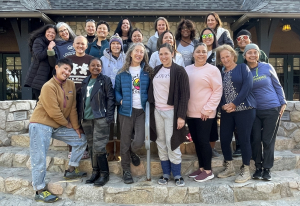
If you are a woman with cancer, click here to learn more about how to become a Living Beauty and participate in retreats like this one! To donate to The Foundation for Living Beauty and help provide more programs like these to women with cancer please visit www.livingbeauty.org/get-involved/donate/.
Cannabis 101: Breaking down Cannabis and what it does for us as consumers
/0 Comments/in Frontpage Article, Holistic Wellness, Living Beauties /by Mariella D'AvirroCannabis 101: Breaking down Cannabis and what it does for us as consumers
Written By Velvet Cannabis a cannabis company located in Eagle Rock, California.
www.velvetcannabis.com
Stepping into the Cannabis world can be a little overwhelming. Don’t you worry that is what we at Velvet are here to help with.
Cannabis contains hundreds of active compounds with a range of medical benefits to be found.
At Velvet, we’ll walk you through the best way to pinpoint effects of different cannabis strains. We’d love to talk about their mix of cannabinoids and terpenes, or the chemical compounds in it. These compounds combine to create the entourage effect experience that can lead to the feeling of being high. (explain the entourage effect some more)
THC and CBD are two of cannabis’ most well known cannabinoids, although there are many more that offer a unique range of effects. THC (delta-9-tetrahydrocannabinol) is the compound that most think of when talking about weed—it’s what makes you feel high, and relieves symptoms like pain and nausea. CBD (cannabidiol) is a non-intoxicating compound known to alleviate anxiety, pain, inflammation and many other medical ailments.
The words “indica” and “sativa” were introduced in the 18th century as a way to describe different species or “strains” of Cannabis.
Sativa- tends to give the consumer more uplifting, active cerebral effects that pair well with physical activity, social gatherings and creative projects. Cultivated for its seeds and fiber, Sativa was named by Carl Linneaus and found in Europe and Western Eurasia.
Indica- known for being physically sedating, perfect for relaxing with a movie, or as a nightcap before bed. Indica was named by Jean-Baptiste and discovered in India, where it was harvested for its seeds, fiber, and hashish production.
Hybrids- falling somewhere in between the Indica-Sativa Spectrum depending on their lineage, they inherit traits from their parent strains.
There is importance in noting that every individual’s body chemistry is different. Indica doesn’t always mean “in da couch” and sativas don’t necessarily energize all consumers. The origins of the two terms are historically rooted in botany and describe the physical structure of a plant, not the depth of your experience. A strain might impact you a little differently than it might your neighbor and that’s the beauty of cannabis. There is something for everyone.
When you look at the back of your shampoo bottle, you may see a term such as “Linalool.” Linalool is a compound known as a terpene also contained in Cannabis! Terpenes are naturally-occurring aromatic compounds that determine the scent of many flowers and herbs; they give cannabis its distinctive odor, flavor, and enriched color in the leaves and buds.
Cannabis has more than 150 terpenes, but some are only present in small amounts; however, the more prominent ones combine together to give us a signature scent profile for specific strains. Terpenes not only give the cannabis plant its unique scent and flavor, but can also produce a range of therapeutic and mood altering effects to a cannabis consumer in conjunction with cannabinoids. There’s more of the entourage effect!
Now here comes the biggest question we all have as consumer:
How will this help me with anxiety or stress? Depression, pain, condition or ailment?
Below we’ve provided a short, but exhaustive list of cannabinoids within the Cannabis plant that have been researched and studied for their medicinal properties to help you choose what may be best for you. At Velvet, we care the most about educating and supporting you as our neighbor.
CBC a non-psychoactive cannabinoid being studied for its anti-anxiety and anti-inflammatory properties.
CBN is a sedating, sleepy cannabinoid found in higher amounts of aged cannabis or degraded THC. Any studies of cannabis or cannabinoids in people with health problems (such as multiple sclerosis, PTSD, or chronic pain) have looked at effects on sleep. Often, there’s been evidence of better sleep quality, fewer sleep disturbances, or decreased time to fall asleep in people taking cannabis.
THCV is being studied for uses such as an appetite suppressant, as a bone growth stimulator, diabetes management, and anxiety treatment.
CBG has many potential therapeutic benefits, including antibacterial, antimicrobial, and anti-inflammatory qualities.
A 2018 review looked at 47 studies (4,743 participants) of cannabis or cannabinoids for various types of chronic pain other than cancer pain and found evidence of a small benefit. Twenty-nine percent of people taking cannabis/cannabinoids had a 30 percent reduction in their pain.
It’s a common misconception that “marijuana” or “hemp” are two different species of plant. In fact, they’re not distinct species at all. They’re just two different names for cannabis, a type of flowering plant in the Cannabaceae family. While science doesn’t differentiate between “hemp” and “marijuana,” unfortunately the law does. It is our hope and belief at Velvet that we can help play a part in changing the stigma.
We hope this starts you off in the right direction in learning more about Cannabis as the industry continues to discover new and exciting qualities about our beautiful plant, Mary Jane! Please come visit us at Velvet for any questions or assistance you may need in Cannabis.
We are here for you, 9am-9pm everyday!
Living Beauties can receive 15% off of their purchase when visiting Velvet Cannabis. Just mention Living Beauty at checkout. Learn more about Velvet Cannabis and their store locations by visiting www.velvetcannabis.com!
Sources:
https://www.leafly.com/news/cannabis-101/sativa-indica-and-hybrid-differences-between-cannabis-types
The leafly guide to Cannabis, A handbook for the modern consumer By the LEAFLY TEAM
https://www.nccih.nih.gov/health/cannabis-marijuana-and-cannabinoids-what-you-need-to-know
10 Ways to Bring Healthy Summer Habits into Fall
/0 Comments/in Frontpage Article, Holistic Wellness, Nutrition /by Mariella D'AvirroKeira Kotler is the Founder and CEO of Everviolet, a beautiful lingerie and loungewear collection
nurturing changes in a woman’s body following treatment for breast cancer and other meaningful life events. Everviolet is a generous supporter of The Foundation for Living Beauty! Keep reading to discover Keira’s tips on how to have a healthy and happy transition into the fall season. You can learn more about Everviolet and shop the collection by visiting www.everviolet.com.
In the summertime, it’s easy to fill our diets with fresh produce from the farmers’ markets and fit in our daily workout, thanks to the longer days. But once autumn rolls around and temperatures begin to drop, a lot of these healthy habits can often fall by the wayside. So, as vacations come to an end, children head back to school and summer fun comes to a halt, we’re taking this opportunity to prioritize our health – to feel our best and give ourselves the energy we need in the new season. Here are some good warm-weather habits to stick with this fall.

1. Eat Fresh Fruits & Veggies.
Eating well keeps our immune system strong. As we head into flu and cold season (and likely, another Covid season), it’s time to continue to focus on eating fresh fruits and vegetables. Foods high in vitamin C like organic citrus, berries, green veggies and peppers are best, in addition to vitamin D from farm fresh eggs and wild-caught fatty fishes. Also, beta-carotene found in carrots, sweet potatoes and squash (lucky for us, they’re all coming into season!) is a must.
2. Stay Active (Indoors & Outdoors).
Just because our bods will soon be covered under warmer clothes, it doesn’t mean regular workout routines should go out the door. Daily exercise does wonders for the body. From enhancing quality of sleep to building immunity, burning calories to clearing the mind, fitness is key to quality of life. In the wake of fall, consider swapping out swimming for cycling or walking, and if weather is an issue, replace outdoor workouts with trips to an indoor gym or studio. Moving our workouts to morning hours also jumpstart our metabolism and help us stay in top physical and metal shape. Don’t forget to vary up exercises to maximize muscle mass, burn more calories and flush stress and toxins from our system.
3. Morning Routines Matter.
Fall often brings busier days and the need for more structure than summer, which means it’s the perfect time to overhaul our morning routines. Journaling first upon waking or taking supplements with a healthy breakfast are great ways to start the day off right. Other options are to meditate, initiate a gratitude practice or do a few stretches with the sunrise. Whatever rituals we choose, it’s about prioritizing self-care and giving to ourselves before we turn our focus outward and set about our day.
4. Staycations.
As summer comes to an end, typically, so do our travel plans. But who says we can’t explore into fall? Planning a quick getaway just a few hours away – whether it be by car or train – can offer just the fresh break we need and keep life feeling adventurous. As can staying home and engaging in local activities we often don’t make time to do. Enjoy the foliage, camp in warm climates, travel to a great museum or wildlife park. Not to mention, with summer travel being pricey and often crowded, fall excursions can help preserve our resources for even more travel.
5. Drink Water.
During the warmer months, we know to drink as much water as possible in order to stay hydrated. But it’s just as important to drink water in all seasons. Fresh water purifies the body, helps keep pounds off and serves as an overall daily detox. And while it can be tempting to opt for flavored beverages, it’s healthier and much kinder to our waistline to pass on the liquid sugar. So, invest in a new water bottle, fill it up and commit to drinking its contents twice per day. Pro tip! As temps get colder outside, consume water with no ice and a squeeze of fresh lemon It’s cleansing, hydrating and tastes delicious.
6. Wear Sunscreen.
Don’t skip this essential skincare step – sunscreen. It’s easy to remember our summer routine when we see bright sunshine and feel the heat. But even though the sun might not feel as strong in fall and winter, UV rays are here year-round (and now stronger than ever). Even when it’s cloudy, it’s important to protect our skin to avoid skin cancer, sunburns, wrinkling and sunspots. For best results, opt for a sunscreen that’s a combined daily moisturizer and keep sunglasses and a hat at the ready, so they’re always there when we need them.
7. Spend Time in Nature.
There’s no better time of year than fall to be outside. With temperatures cool enough not to overheat but warm enough not to make us shiver, it’s an ideal season to walk, hike or go forest bathing. Taking in small doses of sunlight each day helps support our circadian rhythm, promoting restful sleep, and keeps our Vitamin D levels healthy. Known to reduce cortisol (stress hormone) levels, promote good bone health and build immunity, healthy doses of vitamin day are also a great way to prevent seasonal cold and flu. Just be sure to dress in layers for those last-minute temperature swings!
8. Slow Down.
The summer season is often associated with being able to slow down. Breaks from work and vacations are scheduled, kids are out of school and long days make for more social and outdoor time. But in every season, it’s critical to find time to pause. Offering a respite from routine, slowing down enables us to connect more deeply with our emotional, mental and physical patterns, ultimately promoting more self-awareness and appreciation for our surroundings. Consider carving out an hour a week to simply stop. Still the mind, take in the sounds and see what sparks arise.
9. Prioritize Sleep.
We all know sleep is good for our health, but as we head into the hectic schedules of fall and then, the holidays, it’s truly essential that we get enough zzz’s. In order to get a good night’s sleep, avoid using any sort of technology one hour prior to bedtime, skip caffeine after noon and sip on soothing, herbal tea to relax before bed. If news or entertainment can be triggering, opt for a book or magazine instead of Netflix. Rituals like epson salt baths, self-pampering and slipping into cozy loungewear also promote a restful mood.
10. Schedule Dr.’s Appointments.
Summer ends, fall begins and before we know it, the holidays are upon us. Make sure to schedule routine screenings like mammograms and colonoscopies before insurance plans reset and the year is out. Aside from keeping up with regular medical check-ins, clinical trials have shown that screening can save lives. We’re fortunate to have imaging and surgical practices to help catch cancers early, so open the calendar and book appointments for optimal health.
“Live each season as it passes; breathe the air, drink the drink, taste the fruit, and resign yourself to the influences of each.” — Henry David Thoreau
How to Start Your Own Fruit and Vegetable Garden
/0 Comments/in Frontpage Article, Holistic Wellness, Nutrition /by Mariella D'AvirroHow to Start Your Own Fruit and Vegetable Garden
By Dan Hanley
Dan is a Living Beauty supporter who shared with us how he grows his own fruit and vegetable garden! The Foundation for Living Beauty is passionate about providing education on the benefits of implementing a plant-based diet and growing your own fruits and vegetables can be a great way to help incorporate them into your diet more. Keep reading to learn how Dan grows his own garden!
We are in year two of our backyard garden and this post has ideas for you to begin growing your own food.
It’s something we had put off for a few years, and it felt so good to have started it. The main reason I started growing our own food was to be able to have fresh veggies for us. And in California we can do that all year long!
Before you begin, find out what growing zone you’re in. This will be helpful as you decide what, and when, to grow. Simply Google “what growing zone am I in?”.
I started the process by digging up a small part of our backyard and spending about a month cultivating the soil and adding peat and garden soil. After the dirt seemed good, we built a couple of boxes, then added some more good dirt.
If you do not have a yard, don’t let that stop you from growing fresh veggies and/or herbs. We’ll have another post on this, and for now you can start with a couple of pots and good dirt. You’ll also need a sunny area, whether inside or out.
Then this weekend we planted some seedlings along with seeds. It’s all very exciting.
So far, we have planted tomatoes, kale, dinosaur kale, broccoli, spinach, red peppers, bok choy and basil. I’m happy to report that in the last month we have harvested Swiss chard, kale, tomatoes, zucchini, bok choy and potatoes! It’s super exciting for me and our garden is getting close to having produced more food (if we had bought it) than what we put into it financially to get it going.
Our garden checks many boxes that are personal to us, including having healthy food at our fingertips and being part of the food justice movement by growing our own food.
It’s an ongoing process. Just this week I planted more tomatoes and some cucumbers. It’s also a process where I am constantly learning. Our first planting of bok choy rocked, the second one not so much. What I learned is that bok choy does better when it is cooler, not so well in day-long heat.
A few weeks ago I planted melon and zucchini, and fortunately, all of it has taken as is growing.
What are you growing?
Educating, uplifting, and empowering women with cancer.
